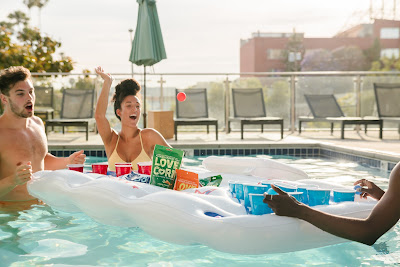How You Can Make Your Swimming Pool as Safe as Possible
Taking a dip in the pool is a great way to relax and have fun. Swimming pools also serve as a social hub for many. However, when people are having a good time in the water, they often disregard their safety. This can expose them to potentially fatal accidents leading to injuries or even death. Most of these accidents are easily preventable, so we must exercise caution and implement stringent safety measures around the pool.
 |
| Pool Fun And Safety |
The Importance of Making Your Pool Safe
Protecting swimmers' lives is the primary reason for taking precautions around a swimming pool. In about 20-60 seconds, a person may go from struggling on the surface to being completely submerged. And since it happens so fast, a drowning person can quickly go unnoticed.
Drowning isn't the only safety hazard facing swimmers, as they can also get injured. This is because the floors around pools are often wet and slippery, predisposing them to slipping and falling.
Unsupervised diving also poses a particular risk for injury. If the water is too shallow, the diver risks hitting their head on the bottom. In the worst-case scenario, the incident might result in death.
To prevent such accidents, strict laws are put out to ensure all pool owners abide by them. Owners who disregard their legal responsibilities regarding pool safety may face legal consequences. Depending on the severity of the offense, a pool owner might be fined to the tune of hundreds, if not tens of thousands of dollars.
How to Make Your Pool as Safe as Possible
Handle Chemicals Properly
Although pool chemicals keep swimmers safe by eliminating disease-causing organisms in the water, they also pose a risk of damage if they are not properly mixed or handled while wearing protective gear. When not in use, pool chemicals should be kept in a secure, ventilated place out of the reach of children at all times.
Keep Safety Equipment Close
All pools should have a life ring (life preserver) of at least 17 inches and a safety hook to pull victims to safety. It's also a good idea to bring a phone with you in case you need to call emergency services.
Repair Damaged Equipment
Check the stability of any ladders and railings leading into and around the pool for the sake of the people relying on them. Also, fix any damaged decking to prevent people from tripping when around the pool.
Clean it Regularly
To assure that you and your swimmers or guests have the best and safest experience you will need to clean your pool weekly or biweekly. This common cycle will provide the most effective as daily there is a chance for something dangerous to fall into the pool. In specific, there is pool cleaning insurance one can invest in to assure that this is done and not forgotten.
The Dangers of a Pool and the Solution
Pool Drain Accidents
While swimming, your hair, body part, or even bathing suit can get trapped in the pool drain. This can happen if the drain cover is broken or isn't visible. Before letting anyone into the pool, ensure your drain cover meets the required safety standards. If you doubt your pool's drain cover, have a qualified pool service technician inspect and fix it.
Drowning
According to the Centers for Disease Control and Prevention (CDC), an estimated 236,000 people drown yearly, making it the third greatest cause of accidental injury death globally. The same report unveiled that children below 5 have the highest drowning rates. You can easily prevent this by ensuring no child visits the pool area without the presence of an adult. Another way to keep children away from pools while unsupervised is to install a fence around them.
Written by Taylor McKnight, Author for Tivly
Enjoy
Richard







No comments:
Post a Comment